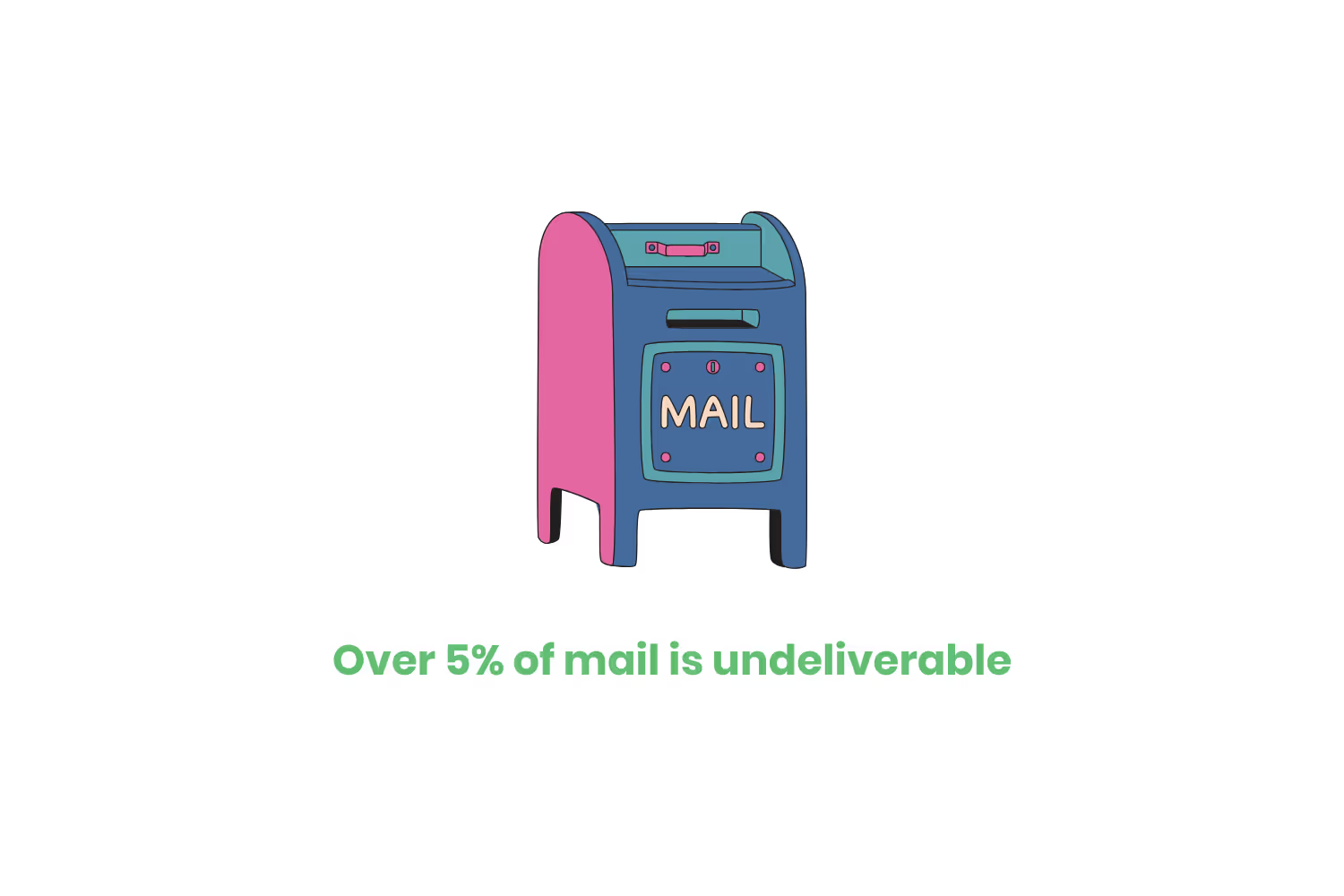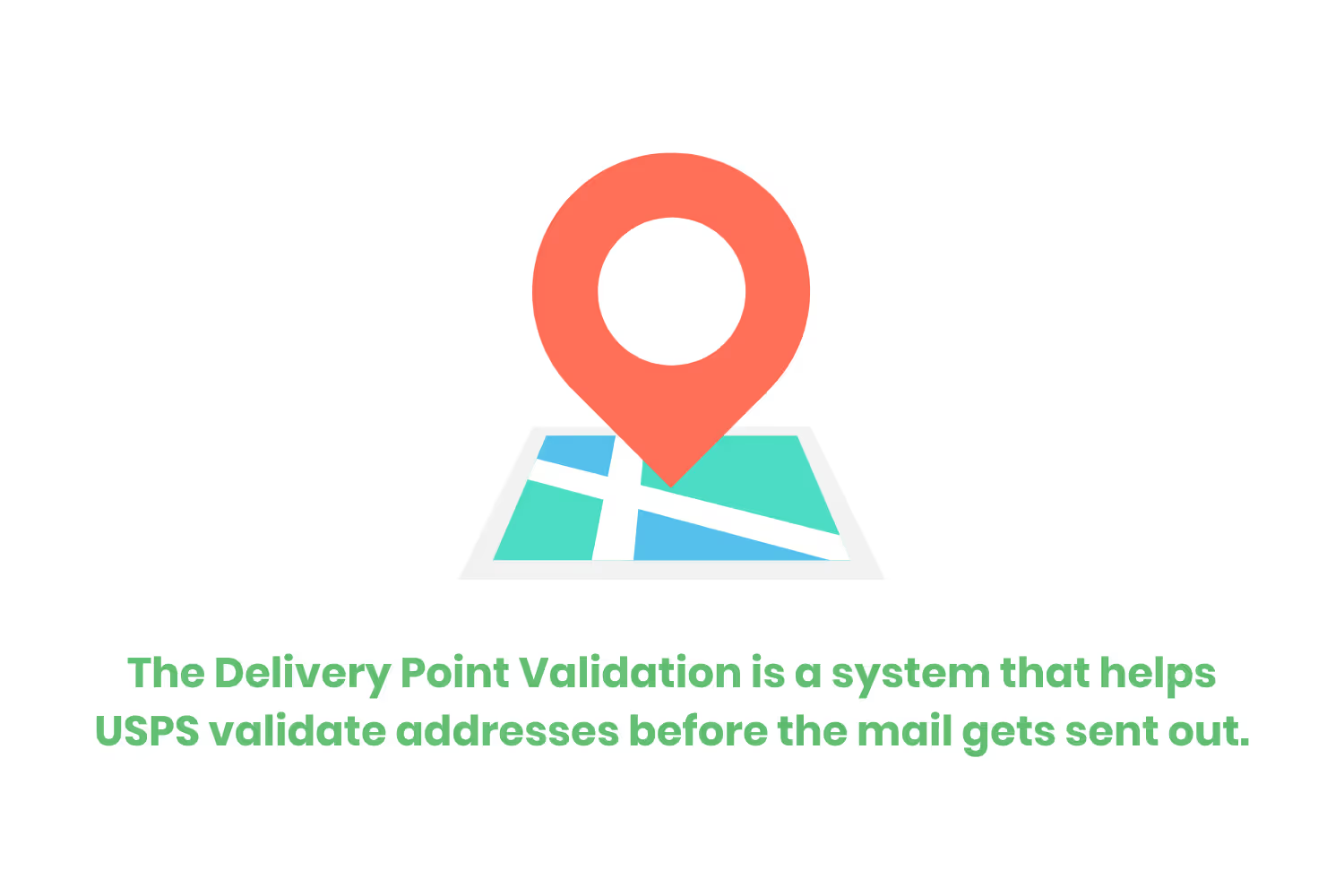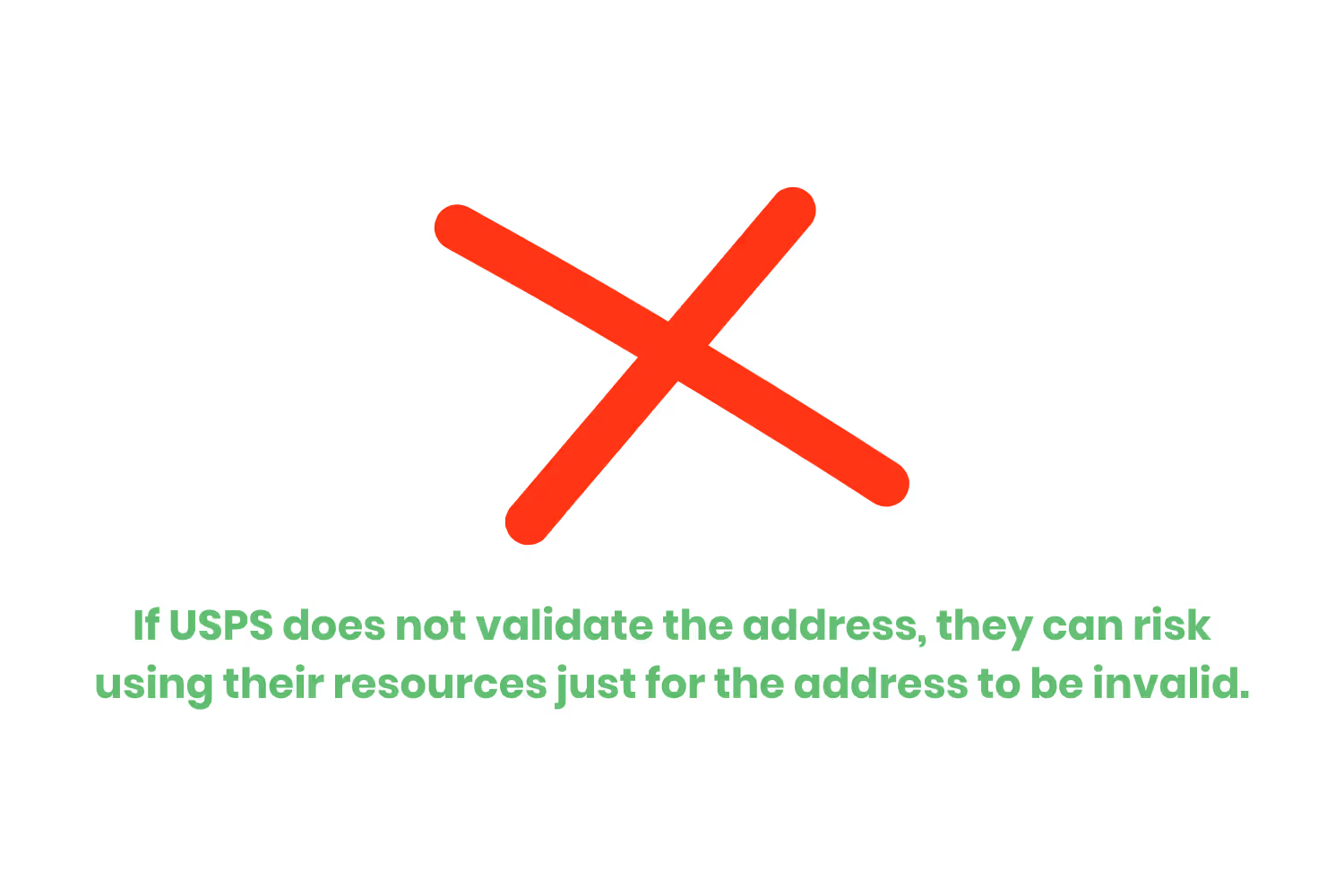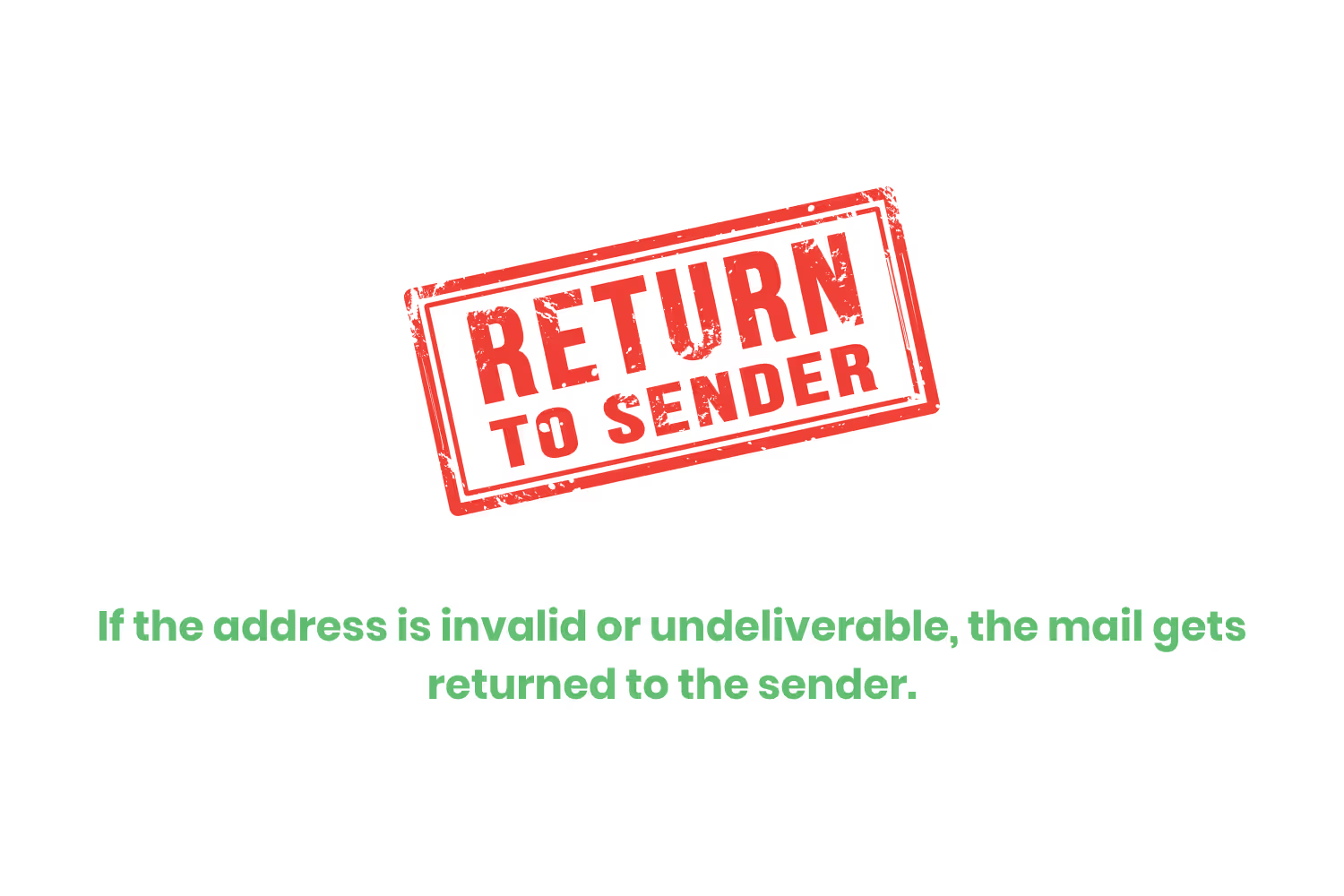Delivery Point Validation: An Ultimate Guide
In this blog we discuss the benefits of delivery point validation, and what the challenges are when it comes to validating an address.

Did you know that over 5% of mail is undeliverable?
That might not seem like a high percentage. But, the USPS sends 152.3 million pieces of mail per day alone. 5% of 152. million equates to 7.6 million pieces of undeliverable mail per day.
That’s an expensive mistake.

So, how does the USPS try to fix this issue? Delivery Point Validation. You might be wondering, what does a fancy term like Delivery Point Validation have to do with ensuring that mail is deliverable? Well, it checks the address listed to the one that’s in the system. If the address matches, it means that the address is deliverable. If there are any errors, it’s undeliverable.
So what is Delivery Point Validation, or what is also known as (DPV). I already mentioned that it’s the process of confirming an address is correct and deliverable. However, while the validation process might seem straightforward, there are many different bumps in the road you may come across when utilizing this tool. So, let’s discuss the benefits of delivery point validation, and what the challenges are when it comes to validating an address.
History of the United States Postal Service
In 1775 Benjamin Franklin became the first postmaster general. This would lay the foundation for what is now the USPS, and pave the way for the next 250 years of technological advances in mail delivery. 62 years later (1847) marks the creation of the first stamp.
The first person on the United States stamps was Benjamin Franklin himself. To purchase one stamp it would cost you only five cents, compared to today it would cost you seventy-three cents. This is of course, depending on where you’re located.

Shortly after, the Pony Express came to be in 1860. This expanded the delivery of letters from California to Missouri. The men working for Pony Express would ride horses to deliver mail, and they would deliver the letters in only 10 days. A great leap forward when it came to the accuracy and speed of postage delivery.
It was about 100 years later that they started experimenting using Express Mail. Fast forward to 2007, and the topic at hand, the United States Postal Service (USPS) made the use of Delivery Point Validation mandatory.
What is Delivery Point Validation?
The Delivery Point Validation is a system that helps USPS validate addresses before the mail gets sent out.
When the program is running, the operator receives a code letting them know of address approval. Ensuring that the address is deliverable and valid helps ensure a more streamlined process for USPS and any businesses that rely on their services.
Now you may be asking what happens after you attempt to validate an address.

You’ll receive a code from the system that indicates what your next steps are:
- N signifies that the address was NOT confirmed
- Y reflects address confirmation
- D means only Primary number confirmation, but the secondary number is missing
- The primary number would be a street number for example
- S means primary number confirmation, but the secondary number was not confirmed.
If the validation process was not done and the address was not confirmed beforehand, it would lead to the mail getting returned to the sender. There are other more in-depth codes you can receive when attempting to validate an address. These other codes can explain to the user exactly what is wrong and helps get the mail to the correct address.
Benefits of Delivery Point Validation
Now I bet you're wondering, why does USPS validate the delivery address?
If USPS does not validate the address, they can risk using their resources just for the address to be invalid. If this would have happened they would have lost money, as well as risk irritating customers…which also negatively impacts their reputation.

The benefits of Delivery Point Validation are:
- Increased accuracy
- Saving In Costs
- Increased Customer Satisfaction
USPS implementing the use of Delivery Point Validation, not only helps themselves, it helps businesses. Ensuring bills and any other important mail get delivered increases the satisfaction of people who send mail out through USPS.
How Does Delivery Point Validation Work?
Let’s walk through an example of how the validation process works. When USPS gets mail this is when the validation process begins. They take the address, run it through their program and check to see if the address is valid and can receive mail.
What can make the address invalid or undeliverable?
- Incomplete address
- The address does not exist
- Deliverable address
- Correct address formatting
- False addresses

If the address is invalid or undeliverable, the mail gets returned to the sender. So, why is it important for businesses to make sure they have the correct address when sending out bills?
Ensuring that you have the correct address can expedite the process and make sure they receive their money as soon as possible. If the mail gets returned to the business, this will delay the business to figure out why it came back, then send it out again.
To avoid all of this, verifying the address is correct with customers can help avoid rejected mail.
Challenges of Validating an Address
Even though validating an address seems fairly straightforward, there are some things that can be a challenge. These challenges can cause a lot of current and future problems for USPS.
So what are the challenges of validating an address?
- Processing Time
- Potential Errors in the system
These may seem like small challenges but they can be very time-consuming. There’s no way to tell the exact time it takes the system to complete the validation process. They could estimate the length it will take, but there are many different factors that can affect the time.
The other potential challenge would be any errors in the system, the most common would be an outdated system update. After all, new homes get built consistently.
Informed Delivery
Once you know the address of the recipient is accurate, you can take your mailing a step further and utilize the USPS free service “informed delivery”. This gives you more access to information about your package. This service allows you to track your package, and you will get notifications of any delays.

If you do not want to get notifications about every change, you can edit what notifications you receive. You can also only allow updates on certain days throughout the week or the month. Arguably the best part of informed delivery is if the package requires a signature, you can sign online.
Allowing you to receive that package, and not have to wait for the next mail delivery. If you’re a business owner you will receive notification once your package arrives for the customer. This can be very convenient for both USPS and business owners. The business owner receives delivery updates which can be helpful in case a customer claims a delivery was never completed.
Conclusion
Delivery Point Validation is very important to help streamline the process for USPS. Allowing USPS to not send mail back to the sender as often as they would without this system. This system allows USPS to save money, and time and keep a good relationship with customers.
Not knowing for sure how long the system will take to process as well as the risk of the system catching an error. This can either be an error due to the shipper like a misspelled street name or an incorrect address. The other error could be due to the system not being up to date on new addresses.
When sending mail, it is vital to check to make sure the address you are sending to is valid, and your handwriting is clear. Doing these two steps can help USPS keep its system moving forward.
Emphasize your product's unique features or benefits to differentiate it from competitors
In nec dictum adipiscing pharetra enim etiam scelerisque dolor purus ipsum egestas cursus vulputate arcu egestas ut eu sed mollis consectetur mattis pharetra curabitur et maecenas in mattis fames consectetur ipsum quis risus mauris aliquam ornare nisl purus at ipsum nulla accumsan consectetur vestibulum suspendisse aliquam condimentum scelerisque lacinia pellentesque vestibulum condimentum turpis ligula pharetra dictum sapien facilisis sapien at sagittis et cursus congue.
- Pharetra curabitur et maecenas in mattis fames consectetur ipsum quis risus.
- Justo urna nisi auctor consequat consectetur dolor lectus blandit.
- Eget egestas volutpat lacinia vestibulum vitae mattis hendrerit.
- Ornare elit odio tellus orci bibendum dictum id sem congue enim amet diam.
Incorporate statistics or specific numbers to highlight the effectiveness or popularity of your offering
Convallis pellentesque ullamcorper sapien sed tristique fermentum proin amet quam tincidunt feugiat vitae neque quisque odio ut pellentesque ac mauris eget lectus. Pretium arcu turpis lacus sapien sit at eu sapien duis magna nunc nibh nam non ut nibh ultrices ultrices elementum egestas enim nisl sed cursus pellentesque sit dignissim enim euismod sit et convallis sed pelis viverra quam at nisl sit pharetra enim nisl nec vestibulum posuere in volutpat sed blandit neque risus.

Use time-sensitive language to encourage immediate action, such as "Limited Time Offer
Feugiat vitae neque quisque odio ut pellentesque ac mauris eget lectus. Pretium arcu turpis lacus sapien sit at eu sapien duis magna nunc nibh nam non ut nibh ultrices ultrices elementum egestas enim nisl sed cursus pellentesque sit dignissim enim euismod sit et convallis sed pelis viverra quam at nisl sit pharetra enim nisl nec vestibulum posuere in volutpat sed blandit neque risus.
- Pharetra curabitur et maecenas in mattis fames consectetur ipsum quis risus.
- Justo urna nisi auctor consequat consectetur dolor lectus blandit.
- Eget egestas volutpat lacinia vestibulum vitae mattis hendrerit.
- Ornare elit odio tellus orci bibendum dictum id sem congue enim amet diam.
Address customer pain points directly by showing how your product solves their problems
Feugiat vitae neque quisque odio ut pellentesque ac mauris eget lectus. Pretium arcu turpis lacus sapien sit at eu sapien duis magna nunc nibh nam non ut nibh ultrices ultrices elementum egestas enim nisl sed cursus pellentesque sit dignissim enim euismod sit et convallis sed pelis viverra quam at nisl sit pharetra enim nisl nec vestibulum posuere in volutpat sed blandit neque risus.
Vel etiam vel amet aenean eget in habitasse nunc duis tellus sem turpis risus aliquam ac volutpat tellus eu faucibus ullamcorper.
Tailor titles to your ideal customer segment using phrases like "Designed for Busy Professionals
Sed pretium id nibh id sit felis vitae volutpat volutpat adipiscing at sodales neque lectus mi phasellus commodo at elit suspendisse ornare faucibus lectus purus viverra in nec aliquet commodo et sed sed nisi tempor mi pellentesque arcu viverra pretium duis enim vulputate dignissim etiam ultrices vitae neque urna proin nibh diam turpis augue lacus.



![[ANSWERED] What is a Long-Term Care (LTC) Pharmacy](https://cdn.prod.website-files.com/67e2b8210878abcba6f91ae6/68d687806a075a1cf64659b0_WhatisLongTermCarePharmacy_925.avif)
